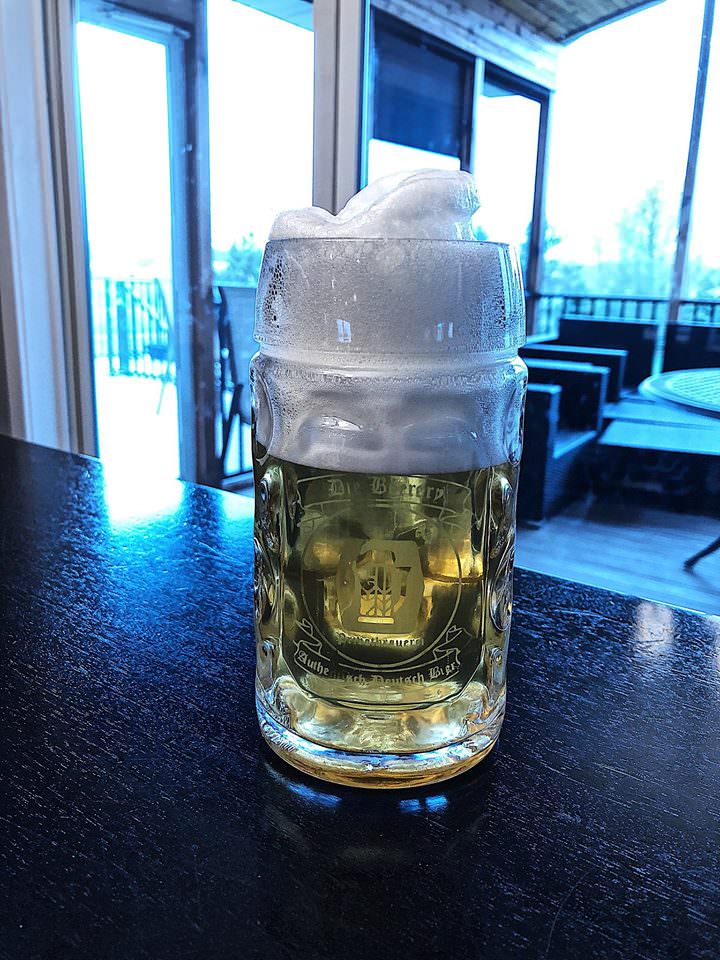- Joined
- Apr 18, 2006
- Messages
- 16,779
- Reaction score
- 5,896
Guessing "German Base Malts" Pilsner & Munich.It’s a romantic notion. It served it purpose. Now it’s more of a marketing deal. Don’t get my wrong they follow it. With technology and science brought many a cheats. I.e galvanized pipe strategically located in the brewed to pick up zinc, water salts, hop extract, lab propagated yeast oozing with zinc, etc etc.
What I have learned in my German encounters is that there is much more than what meets the eye. Sure Weyermann is decades old, sure they follow age old techniques however they are much like Jayjay and his sousvide. They are follow said techniques with cutting edge technology and science to get not only a better product (malt modification, lower protien, better extract) more product and a more consistent product. Just like the farmers growing the barley for decades, but now with herbicide gps and self driving tractors. [emoji6]
We all want to believe that history was somehow better, it’s nostalgic and cool to learn about. The sad truth is in the case of beer, it wasn’t even close. Take decoction for instance. Decoction was not some beer enhancing product is was brought about out of necessity. They didn’t have thermometers, and had poor grain quality. That’s it. Nothing more nothing less. You could take a volume of grain, heat that to a known consistent temp (boiling) add it back and that would raise the temp of main portion. Easy peasy. Due to science and technology we now have thermometers and can heat in other ways. They studied the beers made with the different methods and found more bad than good and stopped.
In the case of macro beer decoction was stopped again out of necessity. Power consumption and time consumption were probably the biggest factors. Takes a lot of time and energy to heat large volumes to boil and hold them. Much faster to just heat the entire volume and step though. Also the drive to knock out 4-6 batches in a day pretty much stopped it in its tracks. That and modern malt just doesn’t need it anymore.
The real story is that the Japanese really started to pioneer brewing science and technology, and zee Germans were the first to jump on the bandwagon.
The REAL secret to malty German beers is this. Mashing and brewing in the absence of oxygen does a few things. Namely way less color pick up, and it doesn’t oxidize malts (specifically cara, and melanoidan heavy malts). So there for a German pilsner is rarely just pilsner or pils and carafoam. with say a high portion of cara or Munich malts gets super malty yet dry from all the melaoidian in the specialty malt.
Take for instance this beer, which is my pilsner. What do you think the grainbill is?
View attachment 600345
How about this helles?
View attachment 600346
There's a common recurrence here, Jeff Alworth said the malt is what American homebrewers overlook
Jeff Alworth said the secret to a Malty Helles is "German Grains". This is from the mouth of Florian Kuplent at Urban Chestnut.
This book goes on to talk about best Weizen/weissbier is made with open fermentation to get more esters and phenols. Using your brew kettle vs your fermenter since it has wider opening. Again "Using German Grains" - Hans Peter Drexler, Scheider & Sohn
Same with Alts and Kolsch it "German Malt" and very hard water. - Christoph Tenge, Hausbraueri Uerige
Now Gose, "German Malt", kettle sour from wheat malt, and tall cylindrical fermenters to keep ester and phenols down. A tiny about of table salt. - Matthias Richter, Bayerischer Banhoff
And Weisse, "German Malt possibly French Wheat", no hops, no air, use speise for high carbonation. - Alan Taylor, Zoiglhaus Brewing













